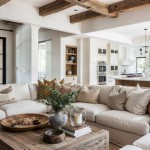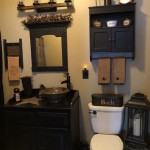Elevating Interiors: A Comprehensive Guide to Home Decor Wall Hanging Ideas
Wall decor serves as a critical element in establishing the aesthetic and atmosphere of any living space. Beyond mere functionality, walls provide a canvas for personal expression and can dramatically alter the perceived dimensions and character of a room. The selection of appropriate wall hangings is a nuanced process, demanding careful consideration of factors such as room size, existing decor, personal style, and desired ambiance. This article provides a comprehensive overview of diverse wall hanging ideas to enhance home interiors.
Understanding the Fundamentals of Wall Decor Selection
Before embarking on the selection of wall hangings, a thorough understanding of the foundational principles of interior design is essential. This involves an assessment of the room's architecture, lighting, color palette, and existing furniture. The goal is to choose wall decor that complements and enhances these existing elements, creating a cohesive and visually appealing environment. Ignoring these foundational aspects can lead to a disjointed and aesthetically unpleasing outcome.
The scale of the wall hanging in relation to the wall itself is a crucial consideration. A small piece of art on a large, blank wall can appear insignificant and lost, while an overly large piece can overwhelm a smaller space. A general guideline is to choose a piece that is approximately two-thirds to three-quarters the width of the wall. This proportion helps to create visual balance and prevent the decor from feeling disproportionate. Furthermore, consider the height of the ceiling when selecting wall hangings. In rooms with high ceilings, taller pieces can help to draw the eye upwards and emphasize the verticality of the space. Conversely, in rooms with low ceilings, horizontal pieces can help to create a sense of width and make the room feel more spacious.
The color palette of the wall hanging should also be carefully considered in relation to the existing color scheme of the room. Complementary colors can create a vibrant and dynamic effect, while analogous colors can create a more harmonious and calming atmosphere. Neutral colors can provide a subtle and understated backdrop, allowing other elements in the room to take center stage. It is also important to consider the texture of the wall hanging. Textured pieces can add depth and interest to a room, while smooth pieces can create a more sleek and modern feel. The texture should complement the other textures present in the room, such as the texture of the furniture, rugs, and curtains.
Finally, the style of the wall hanging should align with the overall style of the room. Modern homes often benefit from minimalist and abstract pieces, while traditional homes may be better suited to more classic and ornate designs. Eclectic interiors allow for a greater degree of flexibility in terms of style, but it is still important to maintain a sense of cohesion and avoid jarring contrasts. By carefully considering these foundational principles, individuals can select wall hangings that effectively enhance the aesthetic appeal and overall ambiance of their living spaces.
Exploring Diverse Wall Hanging Options
The realm of wall hangings encompasses a vast array of options, each possessing unique characteristics and aesthetic properties. Understanding these diverse options allows for a more informed selection process that reflects personal preferences and complements the existing interior design. These options can range from traditional art forms to more contemporary and unconventional approaches.
Framed art prints and paintings constitute a timeless and versatile choice for wall decor. These options offer an expansive range of styles, subjects, and mediums, accommodating diverse tastes and interior design themes. Prints can range from reproductions of classic masterpieces to contemporary abstract designs, while paintings can encompass various styles, such as realism, impressionism, and expressionism. The choice of frame also plays a significant role in the overall aesthetic. Simple, minimalist frames can complement modern interiors, while ornate, gilded frames can enhance traditional settings. Consider the size and placement of the artwork to ensure it harmonizes with the surrounding space; a large statement piece can anchor a room, while a collection of smaller prints can create a gallery wall effect.
Photographs, both framed and unframed, offer a personal and evocative touch to wall decor. Family portraits, travel photographs, and artistic compositions can transform a space into a reflection of individual experiences and memories. Black and white photographs can add a sense of sophistication and timelessness, while color photographs can inject vibrancy and personality. Consider the framing and mounting options to complement the style of the photographs and the overall decor. Gallery wraps, where the photograph is printed on canvas and wrapped around a wooden frame, offer a modern and minimalist aesthetic. Alternatively, traditional frames can provide a more formal and polished look.
Mirrors serve a dual purpose as both functional and decorative elements. They can enhance natural light, create the illusion of space, and add a touch of elegance to any room. Decorative mirrors come in a variety of shapes, sizes, and styles, from ornate antique mirrors to sleek modern designs. Large mirrors can visually expand a small room, while smaller mirrors can be grouped together to create a unique and eye-catching display. Consider the placement of the mirror to maximize its reflective properties and enhance the overall ambiance of the room. For example, placing a mirror opposite a window can effectively amplify natural light and create a brighter, more inviting space.
Textile wall hangings, such as tapestries, macrame, and woven art, introduce texture and warmth to interior spaces. Tapestries, with their rich history and intricate designs, can add a touch of grandeur and sophistication to a room. Macrame, with its bohemian and artisanal aesthetic, can create a relaxed and inviting atmosphere. Woven art, with its diverse range of colors, patterns, and textures, can add a unique and handcrafted element to wall decor. Consider the material and design of the textile wall hanging to complement the overall style of the room. Natural fibers, such as wool, cotton, and linen, can add a sense of warmth and earthiness, while synthetic fibers can offer durability and ease of maintenance.
Shelving units, both floating and mounted, provide a functional and aesthetically pleasing solution for wall decor. Shelves can be used to display books, plants, decorative objects, and other personal items, creating a visually engaging and personalized display. Floating shelves offer a minimalist and modern aesthetic, while mounted shelves can provide a more traditional and structured look. Consider the material and design of the shelves to complement the overall style of the room. Wooden shelves can add warmth and natural beauty, while metal shelves can create a more industrial and contemporary feel. The arrangement of items on the shelves is also crucial for creating a visually appealing display. Grouping items of similar color or texture can create a cohesive and harmonious look, while mixing different shapes and sizes can add visual interest and dynamism.
Strategic Placement and Arrangement Techniques
The placement and arrangement of wall hangings are as critical as the selection process itself. Improper placement can diminish the impact of even the most exquisite piece, while strategic arrangement can elevate the overall aesthetic of the room. Factors such as eye level, symmetry, and grouping play a pivotal role in achieving a visually balanced and harmonious result.
The principle of hanging artwork at eye level is a fundamental guideline in interior design. Eye level typically falls between 57 and 60 inches from the floor, but this may need to be adjusted based on the height of the ceiling and the size of the artwork. Hanging artwork too high can make it appear disconnected from the rest of the room, while hanging it too low can make it feel cramped and confined. When hanging multiple pieces of artwork, the center of the arrangement should be at eye level. This ensures that the artwork is easily viewed and appreciated. Consider the viewing distance when determining the placement of artwork. Pieces that are viewed from a distance can be hung slightly higher, while pieces that are viewed up close should be hung lower.
Symmetry and asymmetry offer contrasting approaches to wall hanging arrangements. Symmetrical arrangements create a sense of order and balance, while asymmetrical arrangements offer a more dynamic and visually interesting effect. Symmetrical arrangements typically involve pairing identical or similar pieces of artwork and positioning them equidistant from a central point. This approach is well-suited to formal spaces and can create a sense of elegance and sophistication. Asymmetrical arrangements, on the other hand, involve arranging pieces of artwork of different sizes and shapes in a non-uniform manner. This approach is well-suited to informal spaces and can create a more relaxed and eclectic atmosphere. Achieving balance in an asymmetrical arrangement requires careful consideration of the visual weight of each piece. Larger pieces should be counterbalanced by smaller pieces, and pieces with strong colors or patterns should be balanced by pieces with more muted tones.
Creating a gallery wall involves grouping multiple pieces of artwork together to create a cohesive and visually impactful display. Gallery walls can be arranged in a variety of ways, from structured and symmetrical layouts to more free-flowing and organic arrangements. The key to creating a successful gallery wall is to maintain a sense of cohesion through the use of color, theme, or style. For example, a gallery wall might feature a collection of black and white photographs, a series of botanical prints, or a mix of abstract paintings. Consider the spacing between the pieces of artwork to create a visually balanced and harmonious arrangement. Consistent spacing can create a sense of order and uniformity, while varying the spacing can add visual interest and dynamism. It is also important to consider the frames of the artwork. Using frames of similar color and style can create a cohesive look, while mixing different frames can add visual interest and personality.
When arranging wall hangings around furniture, it is important to consider the scale and proportion of the furniture and the artwork. The artwork should complement the furniture and not overwhelm it. For example, a large piece of artwork can be hung above a sofa or bed to create a focal point, while smaller pieces of artwork can be arranged on either side of a mirror or window. Consider the height of the furniture when determining the placement of the artwork. The bottom of the artwork should typically be positioned a few inches above the top of the furniture. This creates a visual connection between the furniture and the artwork and prevents the artwork from feeling disconnected from the rest of the room. It is also important to consider the color and style of the furniture when selecting artwork. The artwork should complement the furniture and not clash with it. For example, a brightly colored painting might look out of place above a neutral-colored sofa.

6 Creative Diy Wall Hanging Ideas For Home Decor

Diy Wall Hanging Craft Ideas Newspaper Decoration Home Room Decora Crafts Decor Handmade Hangings

3 Beautiful Wall Hanging Craft Ideas Diy Decor Home Decorating Paper Creative Art Crafts

6 Creative Diy Wall Hanging Ideas For Home Decor

17 Best Diy Wall Decor Ideas In 2025 Art

Living Room Wall Decor 66 Ideas To Decorate Your Drawing Walls In 2025

14 Wall Decor Ideas Designs For Every Room By Livspace
:strip_icc()/cdn.cliqueinc.com__cache__posts__268171__emily-henderson-target-design-advice-268171-1537395824654-image.700x0c-3bf5dbafc49045e5b14c9ad244891f94.jpg?strip=all)
40 Best Living Room Wall Décor Ideas

Diy Wall Hanging Craft Ideas Flower Home Decor Crafts Easy Paper Decorations

Paper Wall Hanging Room Decor Ideas At Home Diy
Related Posts







